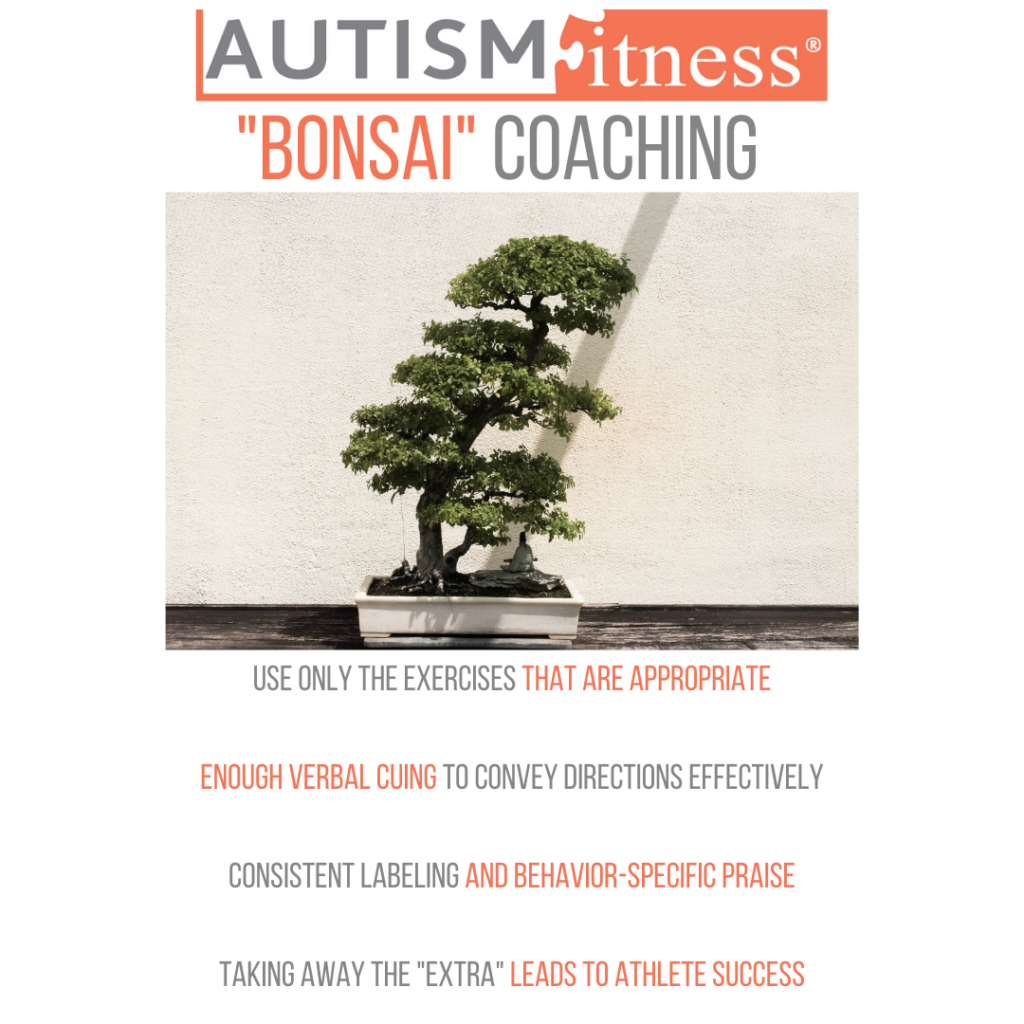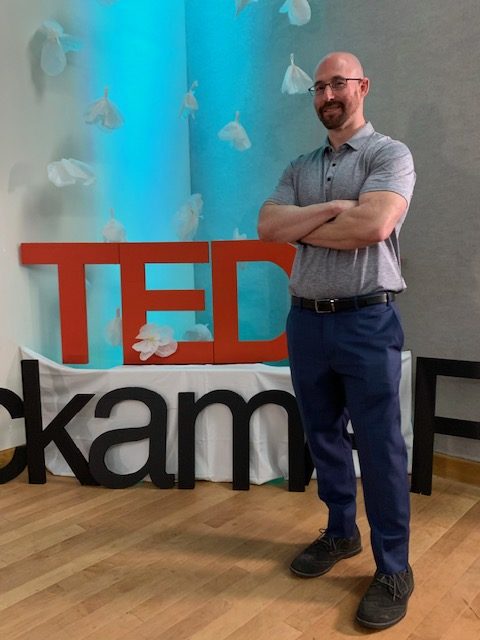Does your child with ASD hate to exercise? Here’s a different perspective.
The biggest challenge for individuals with autism in exercise, fitness, and sports is often low motivation. While physical complications in autism, including low tone, core stability, and delays in motor planning are certainly a factor, it is often the behavioral aspect that is the most overwhelming. Does this mean that children, teens, and adults with autism can never have a successful exercise program?
My child with Autism Hates to Exercise
“My child with autism hates to exercise” is the most common email I receive from parents. Instead of a non-starter or “the end of the issue,” there are some super important questions to answer. Certainly taking the initial exercise experience into account, we (professionals, parents) must understand both details and context around the situation.
If we agree that regular/consistent exercise is important for the autism population, it makes sense to have a best-practices approach that meets the needs of each individual. Below are the must-answer questions to create fitness experience that is not only productive, but sustainable.
Here are the 5 most important questions surrounding the fitness experience for a child, adolescent, teen, or adult with autism or related neurodiversity.
- What happened during the first session?
- Where was the fitness session taking place?
- What exercises were being used?
- How were directions being delivered?
- What was the reaction?
What happened during the first session?
Objectively, what went on during that first fitness session with your athlete on the autism spectrum?
“My son got on the treadmill for 30 seconds and then screamed to get off and wouldn’t go back on.”
This is a common situation. It actually answers a few more questions down the list, and gives us a good idea of what happened. This is where parents, and often professionals get stuck in bringing fitness and sports programs to the autism population.
Where was the fitness session taking place?
The surrounding environment can be a big deal (positive or overwhelming) for individuals with ASD. Fitness in the home is different from a gym. Gyms differ widely. What about the adapted physical education setting?
Too much stimuli (lights, sound, people) is often a catalyst for overwhelming individuals with autism. There may be hypersensitivities that we don’t initially notice. Distractions can occur in nearly any environment, whether home or gym.
Optimizing the fitness environment for the autism population starts with removing clutter and the most obvious distractions. Having only the equipment needed in the immediate area makes a big difference.
What exercises were being used?
In Autism Fitness programming, there is great emphasis on exercise selection. Do the choices in exercise for the autism population matter? Absolutely. Exercises that are too complex, or those not addressing physical priorities can prove detrimental.
While the treadmill is a popular modality and one that many equate with exercise, we have to ask whether it is appropriate for an individual with ASD to improve the fitness abilities that matter.
Matter? Yes. Not all exercises are equal. And some, particularly strengthening exercises, will have a greater benefit for individuals with autism.
Relating this back to low motivation, the exercise needs to be scalable. If it is too challenging or feels awkward, the athlete can experience elevated anxiety leading to avoidance or, as it escalates and intensifies, meltdown behavior.
How were directions being delivered?
We get anxious when we don’t know what’s coming next and/or what the expectations are. For children, teens, and adults with autism, the experience of anxiety and frustration is amplified. Non-verbal individuals may have a more difficult time with the challenge of expressing needs and emotions.
The most common issue for fitness professionals and parents working with the ASD population is overcoaching. Using too many directions and abstract/vague terms often leads to undesirable outcomes (including frustration and meltdowns, sometimes for both parties).
One of the first coaching strategies learned in the Autism Fitness Certification is ‘Minimal Explanation for Maximal Results,’ meaning we use fewer verbal directions in favor of demonstrating the exercise. This enables the athlete to see and perform the exercise as soon as possible, rather than having a lengthy, far less effective, explanation.

What was the reaction?
I’ve had autism athletes cry, scream, hit, run, and lie on the floor refusing to get up during some assessment sessions. Certainly these are not the greatest starts, however they are rarely, if ever, a sign to give up. This does not mean we disregard or ignore these behaviors, particularly if they are severe (eloping, self-injurious behavior, and/or aggression must be addressed by a qualified professional).
Respecting our autism and neurodiverse athletes as people who deserve to be fit an healthy, our role is to facilitate success. This is not easy or automatic, though it is possible. We can’t nor should we attempt to ‘force fitness.’ Exercise with any individual, particularly the autism population, requires a structured, intentional approach.
‘My son/daughter with autism hates to exercise’ is usually based on a single experience or a few initial sessions where the right planning and structure can make a big difference. When we address the environment, the behavior support approach, and the specific exercises, a more successful session happens.
Successful fitness programming for children, teens, and adults with autism takes time. Physical, adaptive/behavioral, and cognitive complexities cannot be ignored. Instead, taking a best-practices approach to identifying when challenging behaviors occur, why they might be happening, and what we can do to best support the athlete leads us to productive sessions.
Think of ‘Hating to exercise’ as a temporary state. It’s a starting point, though not ideal, very common. Over the past 20 years of coaching the autism and neurodiverse/special needs population of all ages and ability levels, I’ve learned these important lessons that can be applied to virtually any fitness, sport, or movement program.
- The first session (or first few), often have the greatest amount of anxiety and incidence of maladaptive behavior.
- The sooner we can identify each athlete’s need for frequency in breaks and preferred activity time the better.
- The goal is to have the athlete leave the first session with a success. This can mean simply stepping over a single hurdle or performing one medicine ball throw.
- Wait. A few extra seconds before delivering instruction or when an athlete shows signs of anxiety can make THE difference. It’s not always an emergency
- Always take quality movement over quantity of movement.
- A motivated athlete will enable us to get more done. Building motivation takes time and trust. This process can take multiple sessions.
- Consistency wins.
- Motivation is seldom a big, happy smile. It is focus and completion of the exercise/activity.

Eric Chessen, MS, is the Founder of Autism Fitness. An exercise physiologist with an extensive background in ABA and positive behavior support strategies, Eric has 20 years of coaching and programming for the autism and neurodiverse/special needs population. Eric is the creator of the Autism Fitness Certification and PAC Profile Method.
